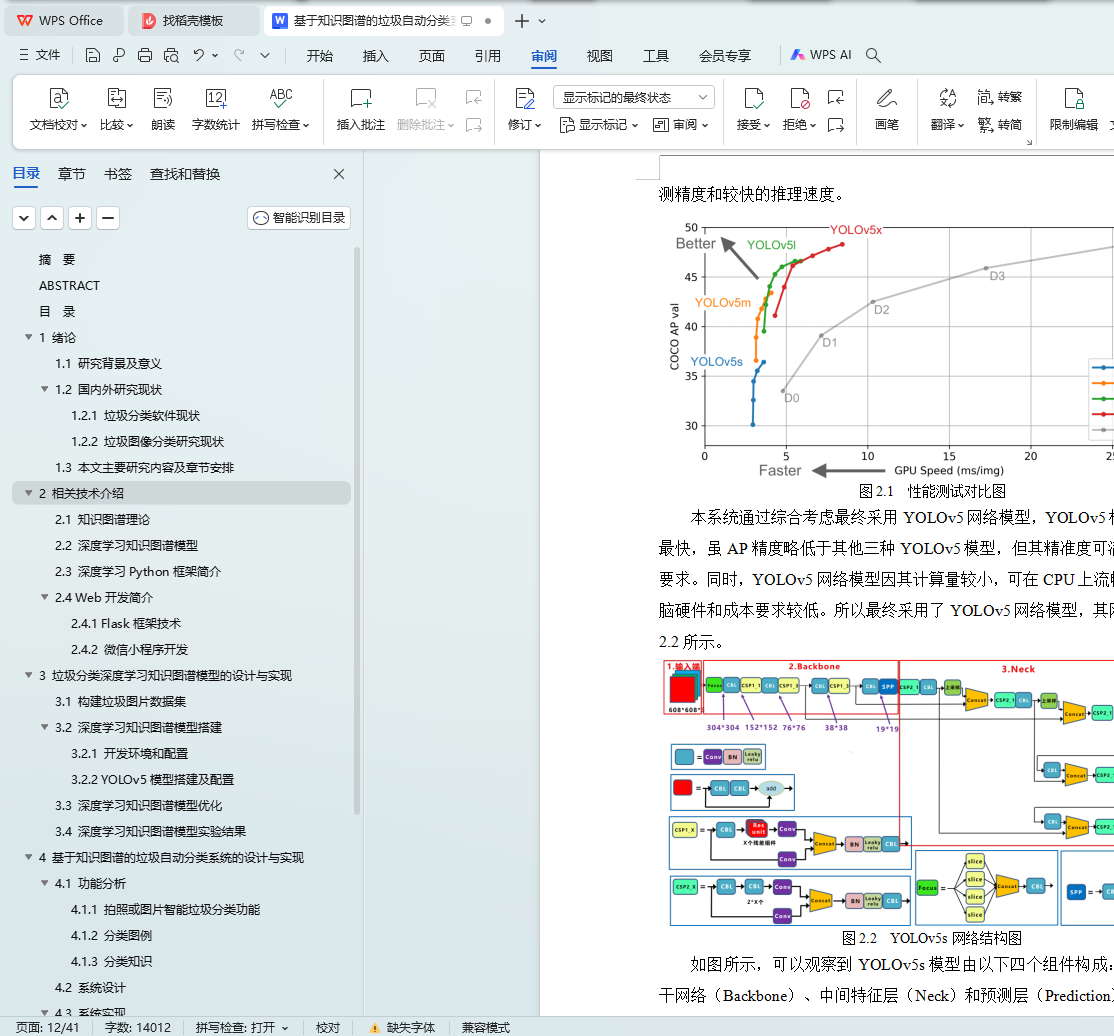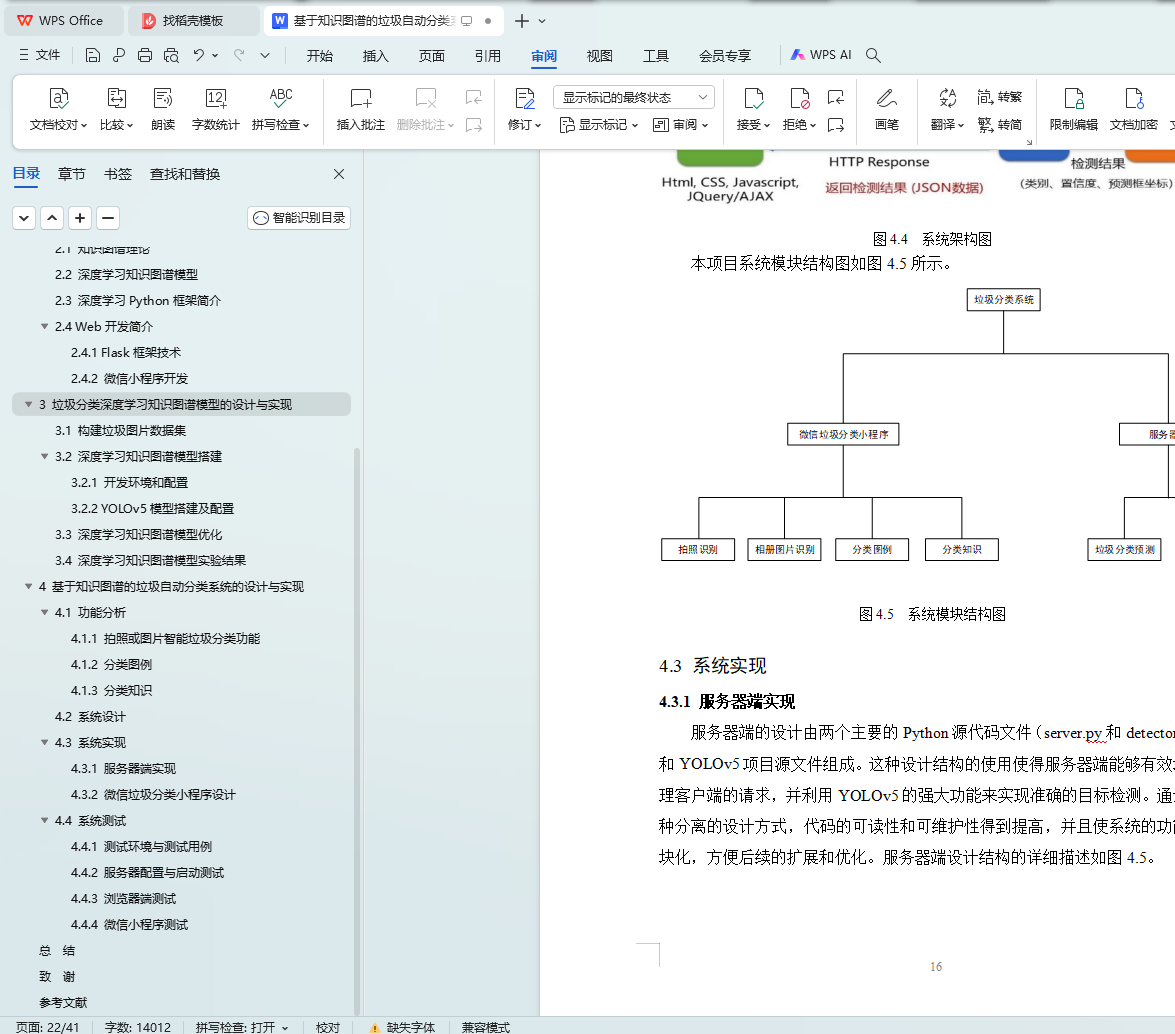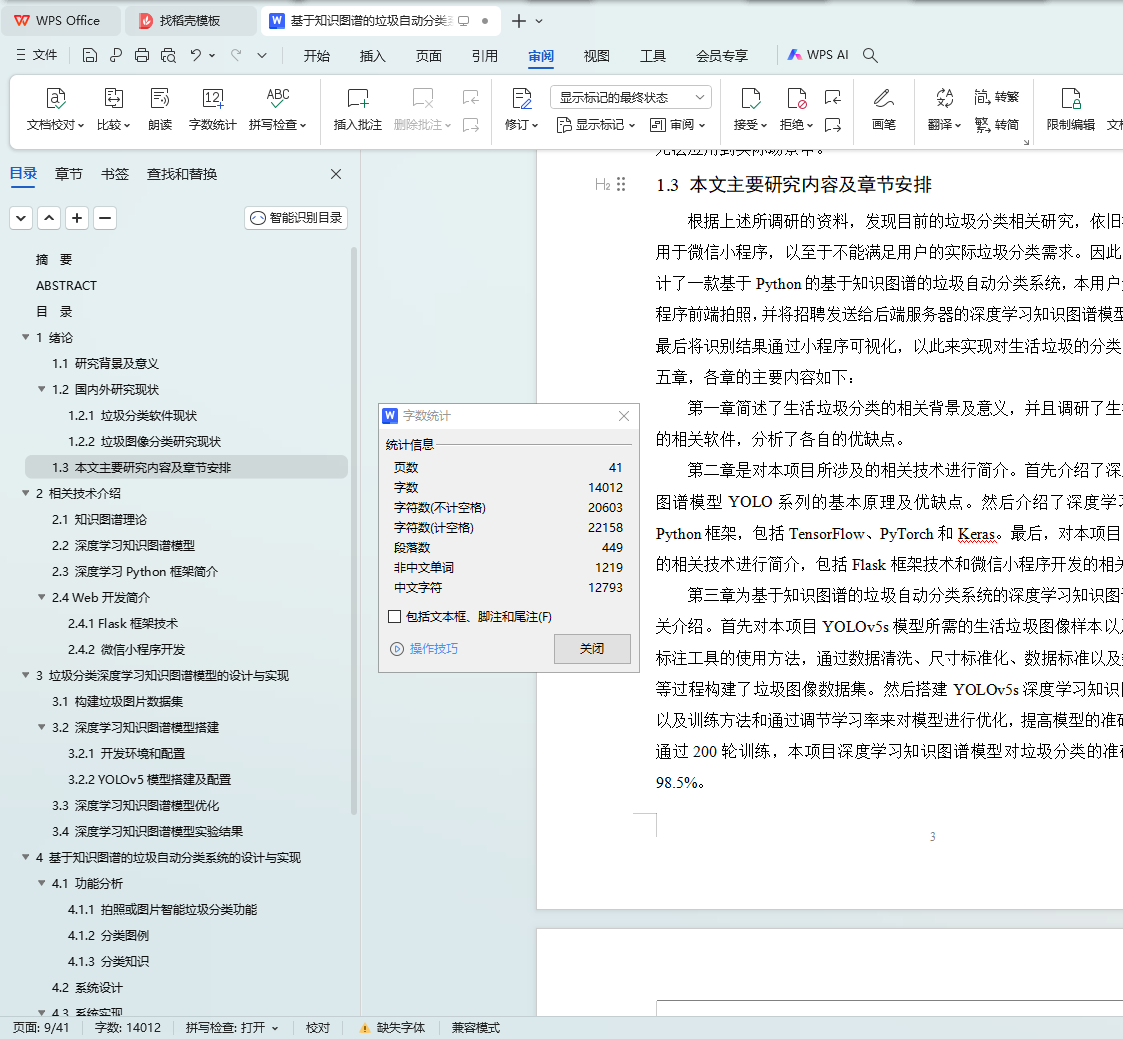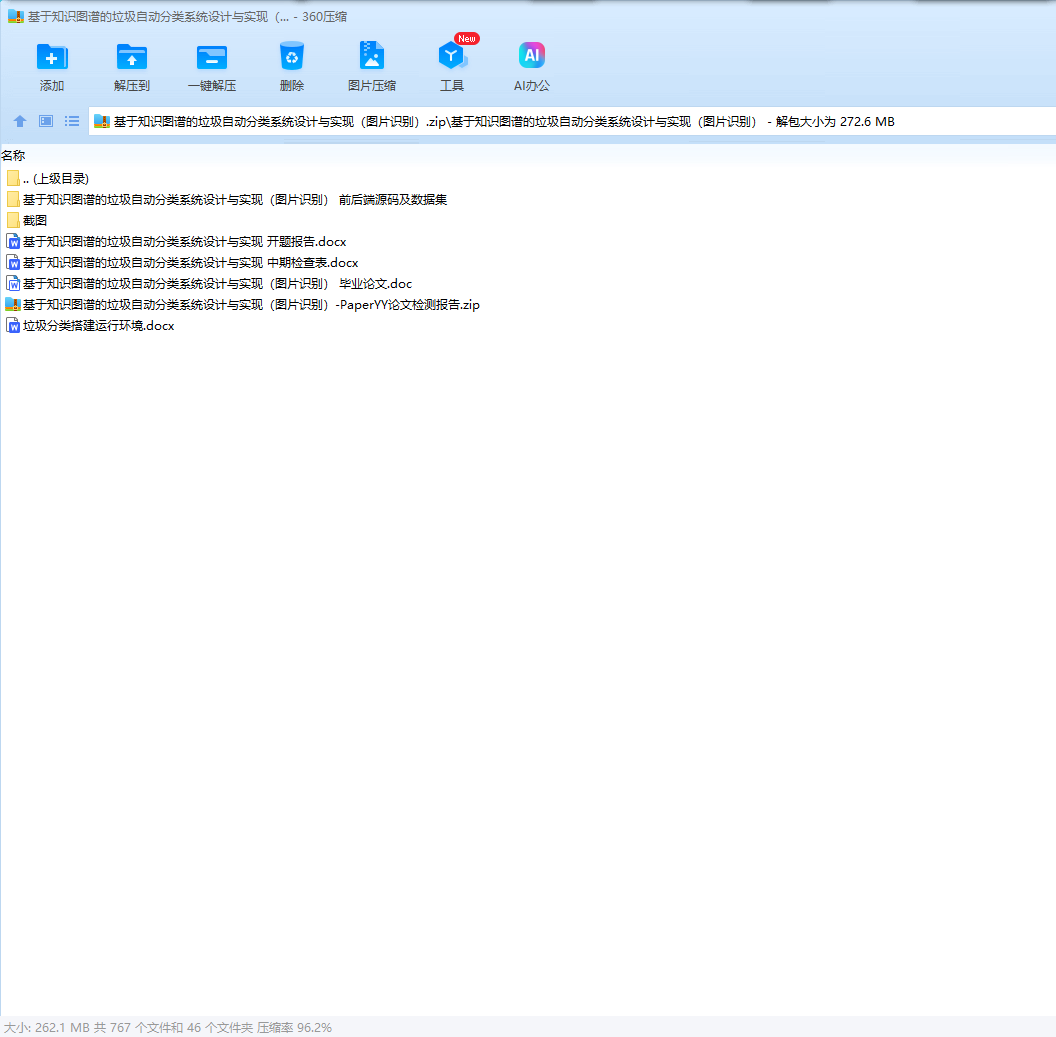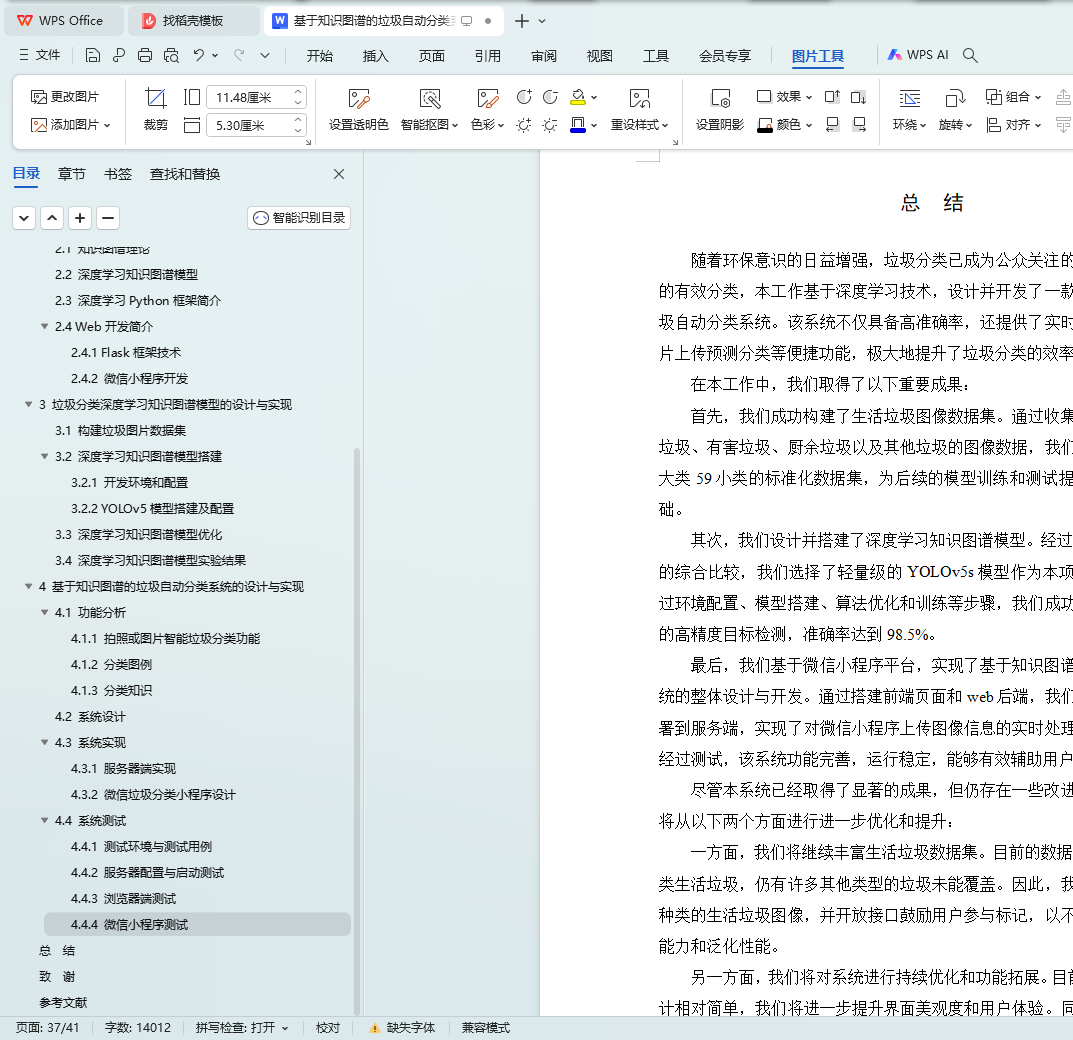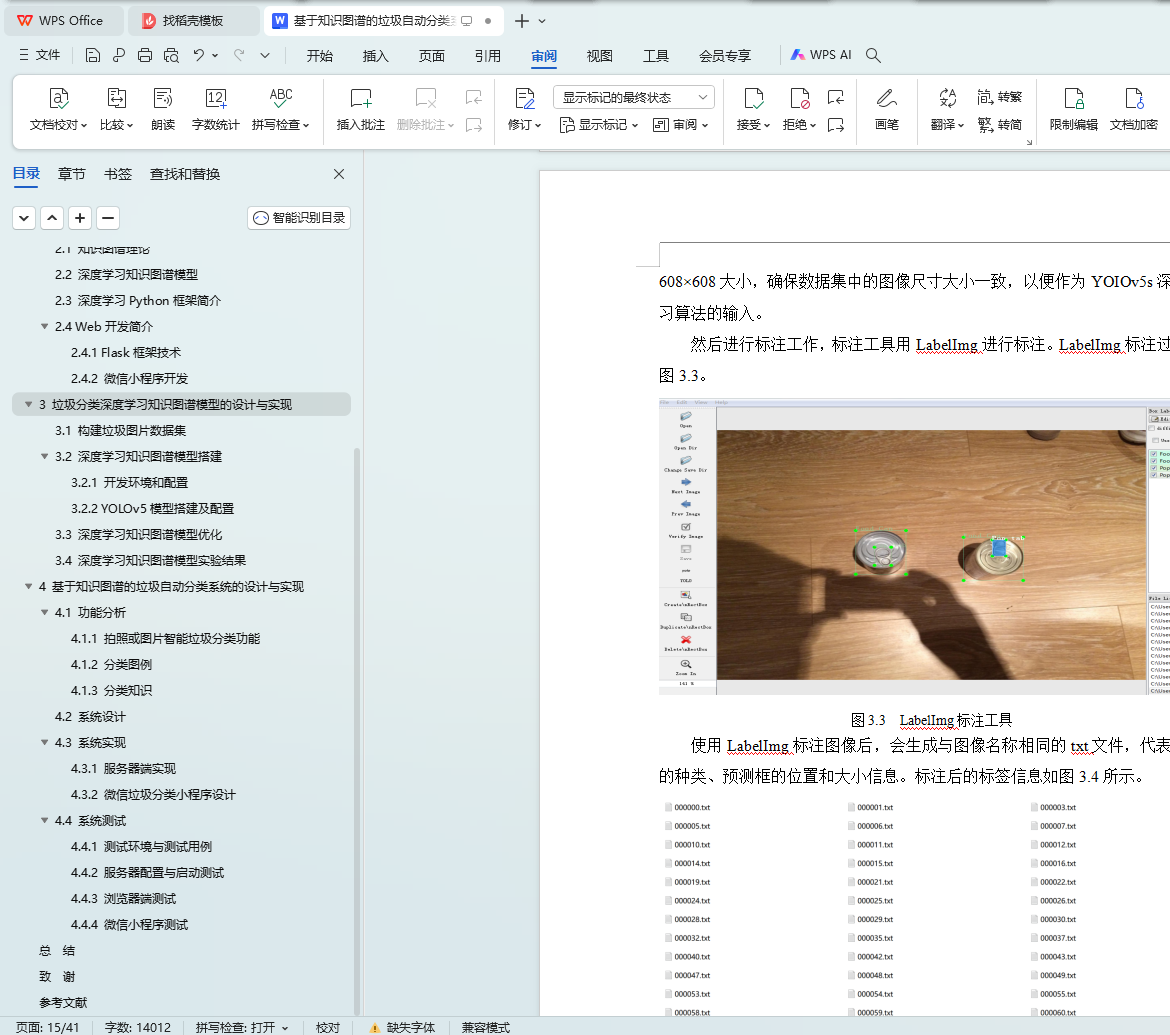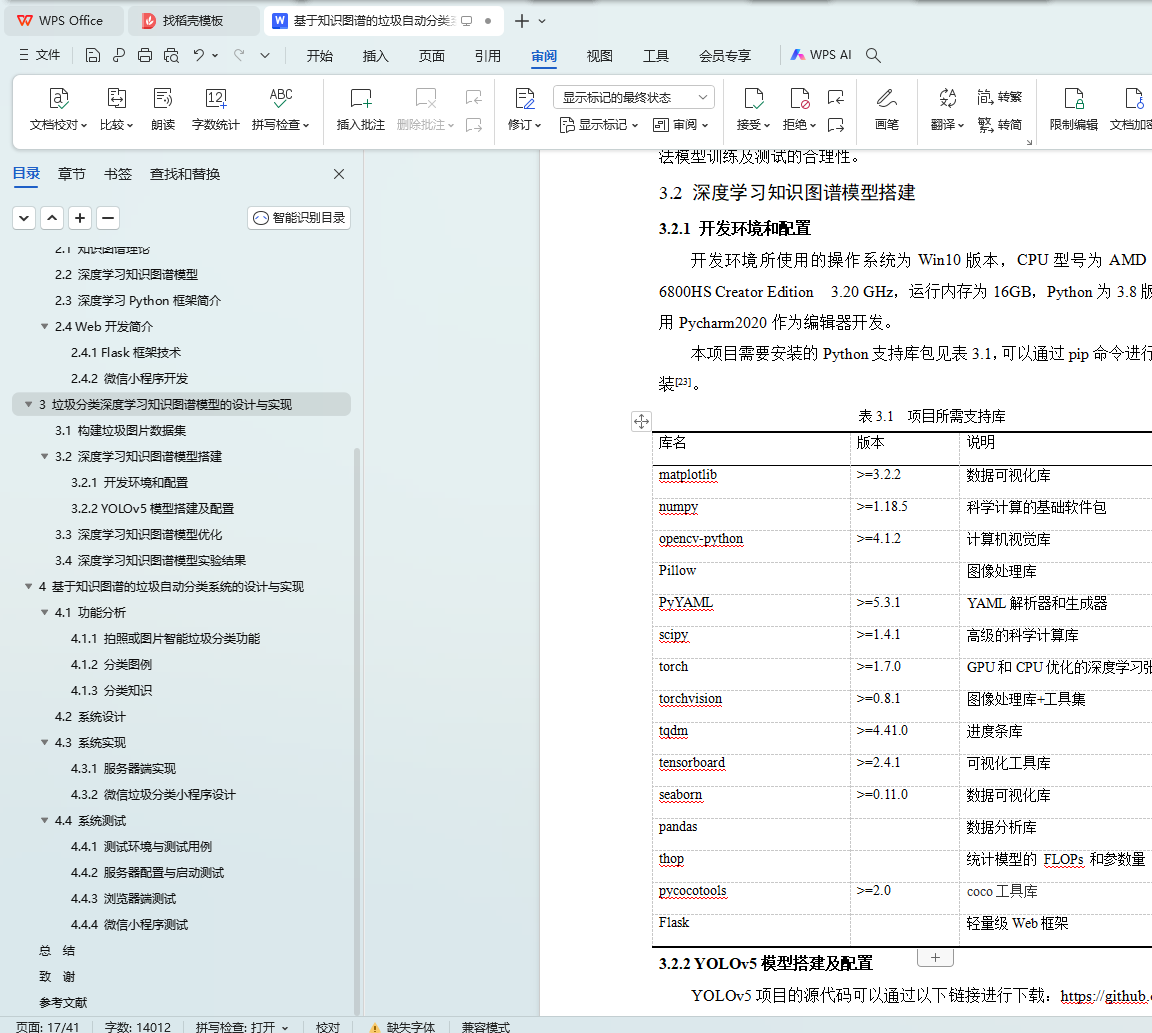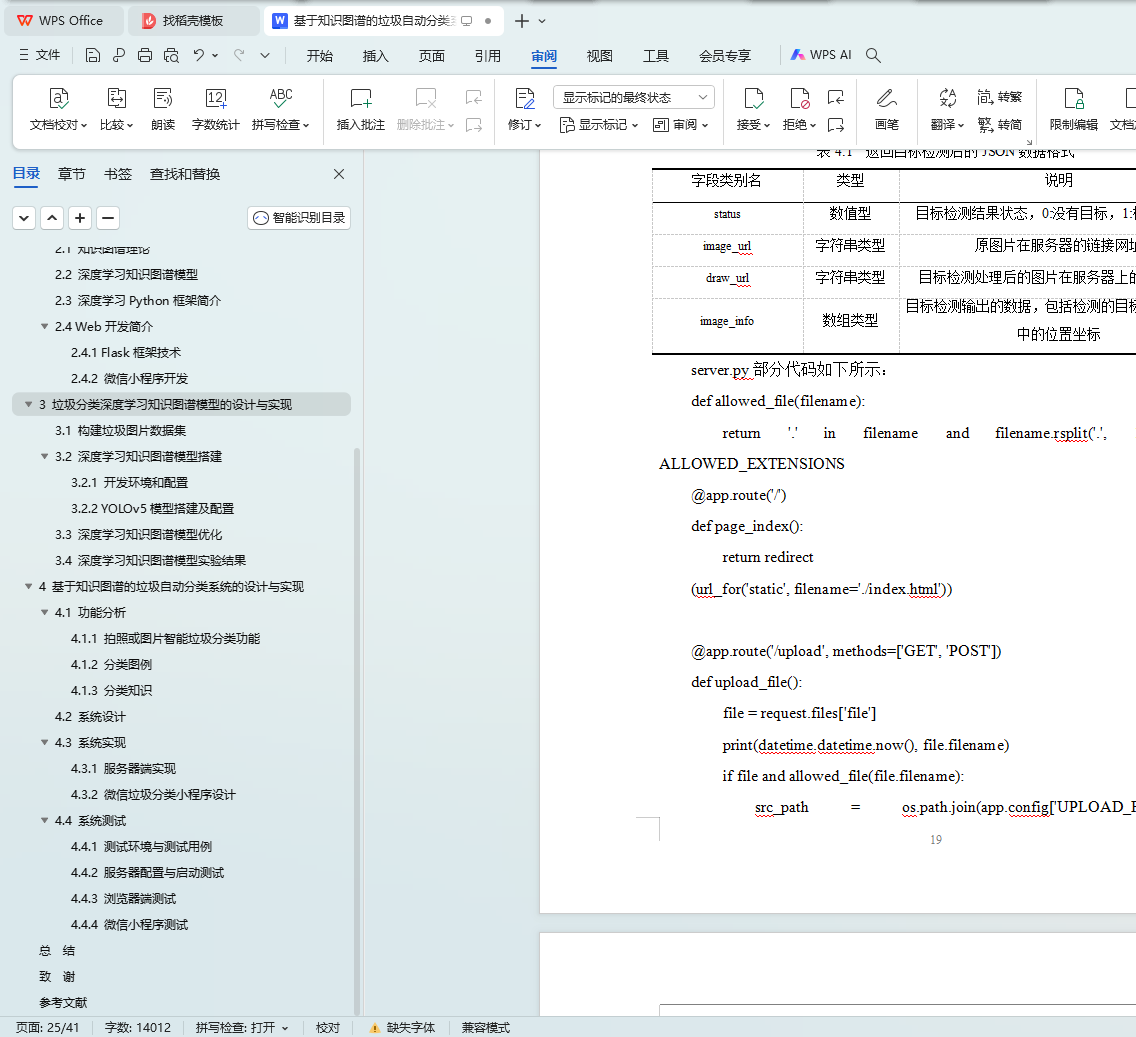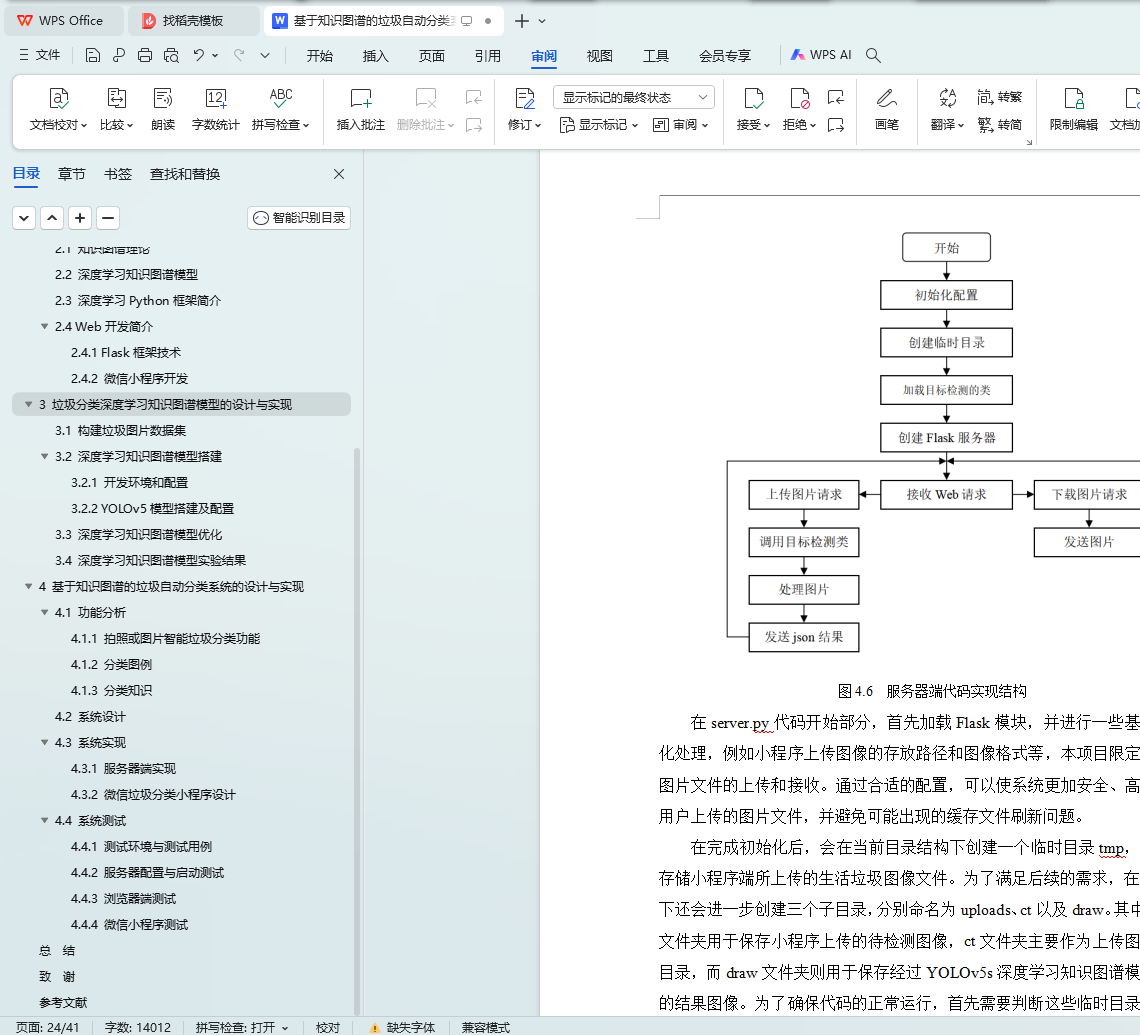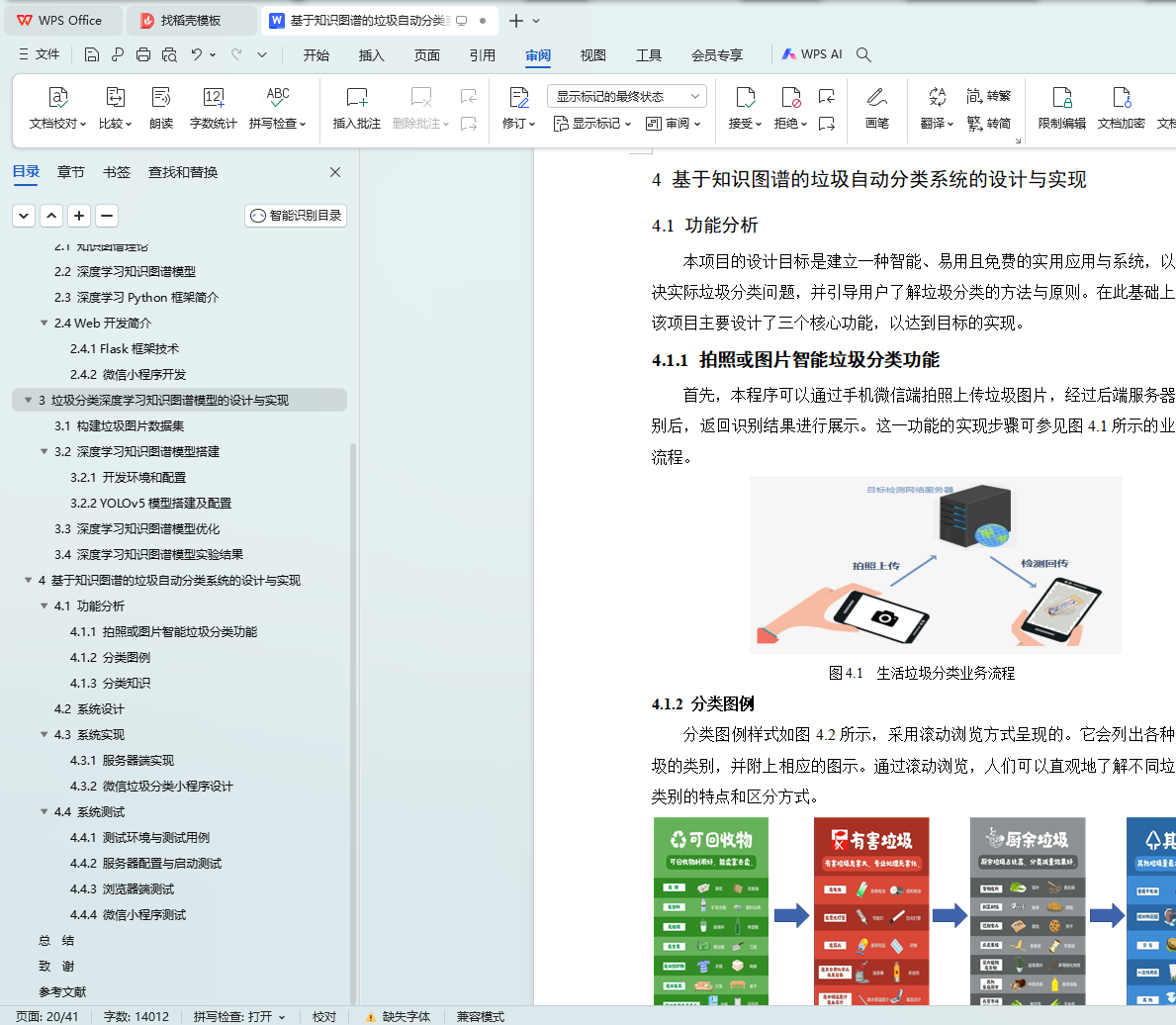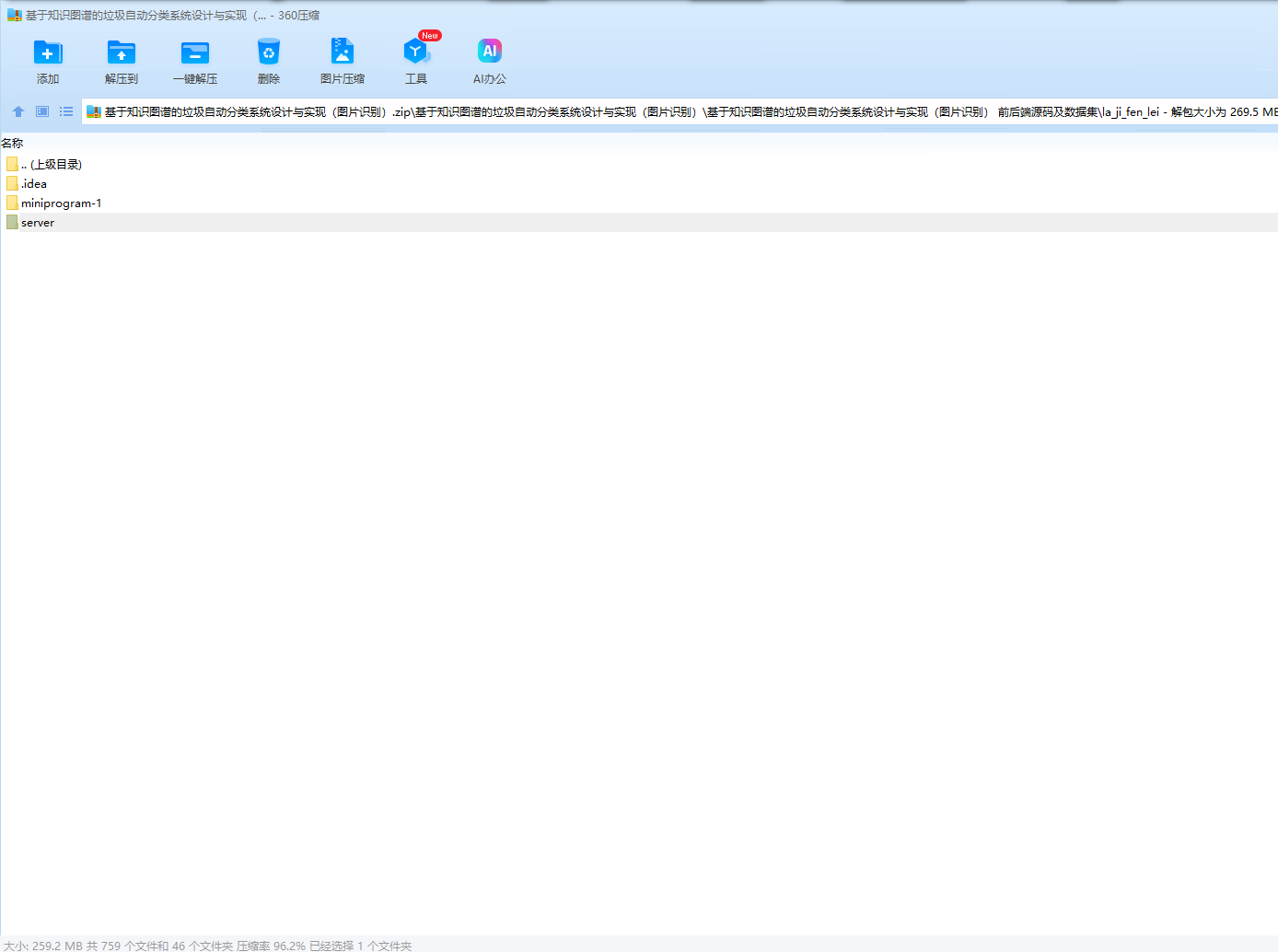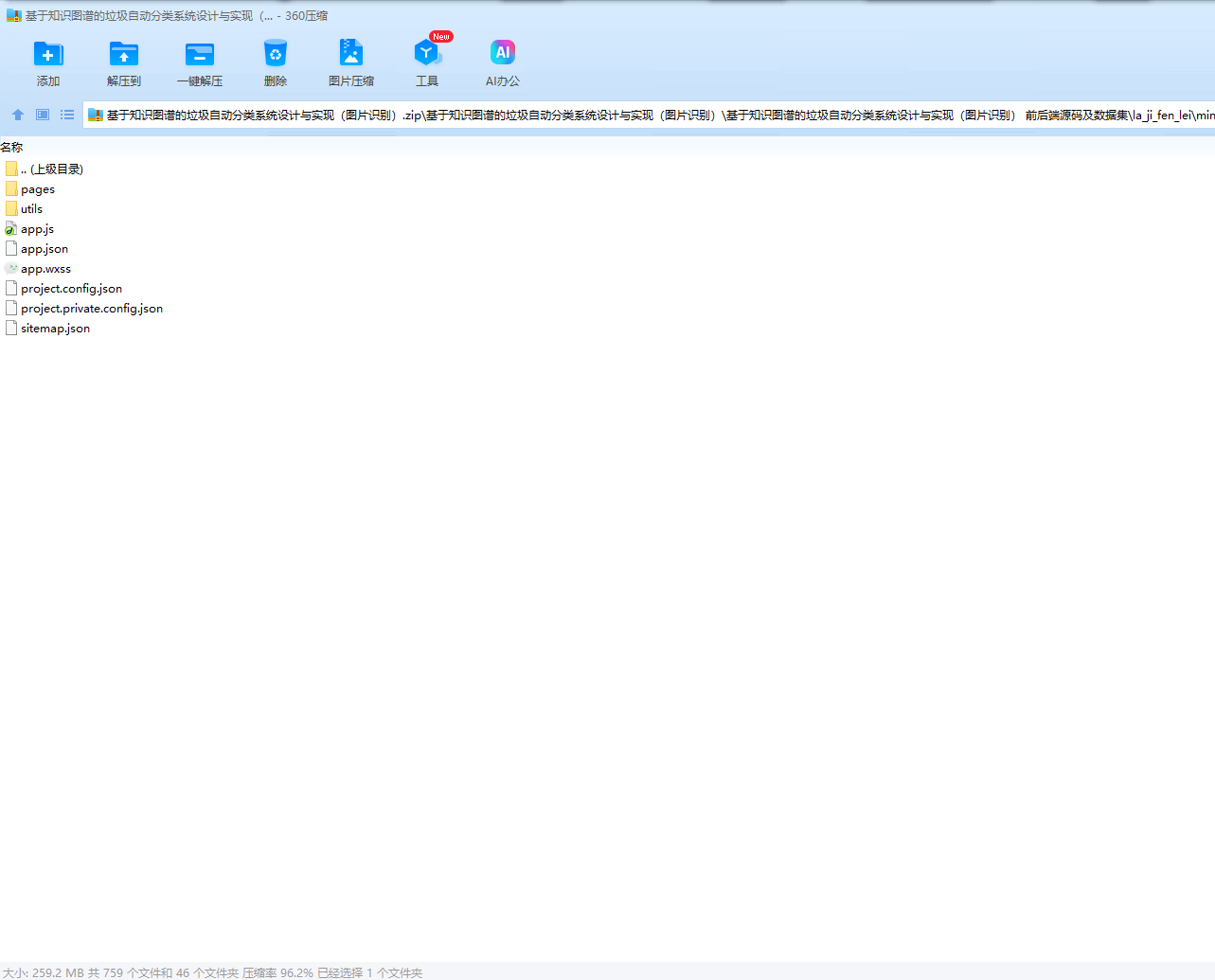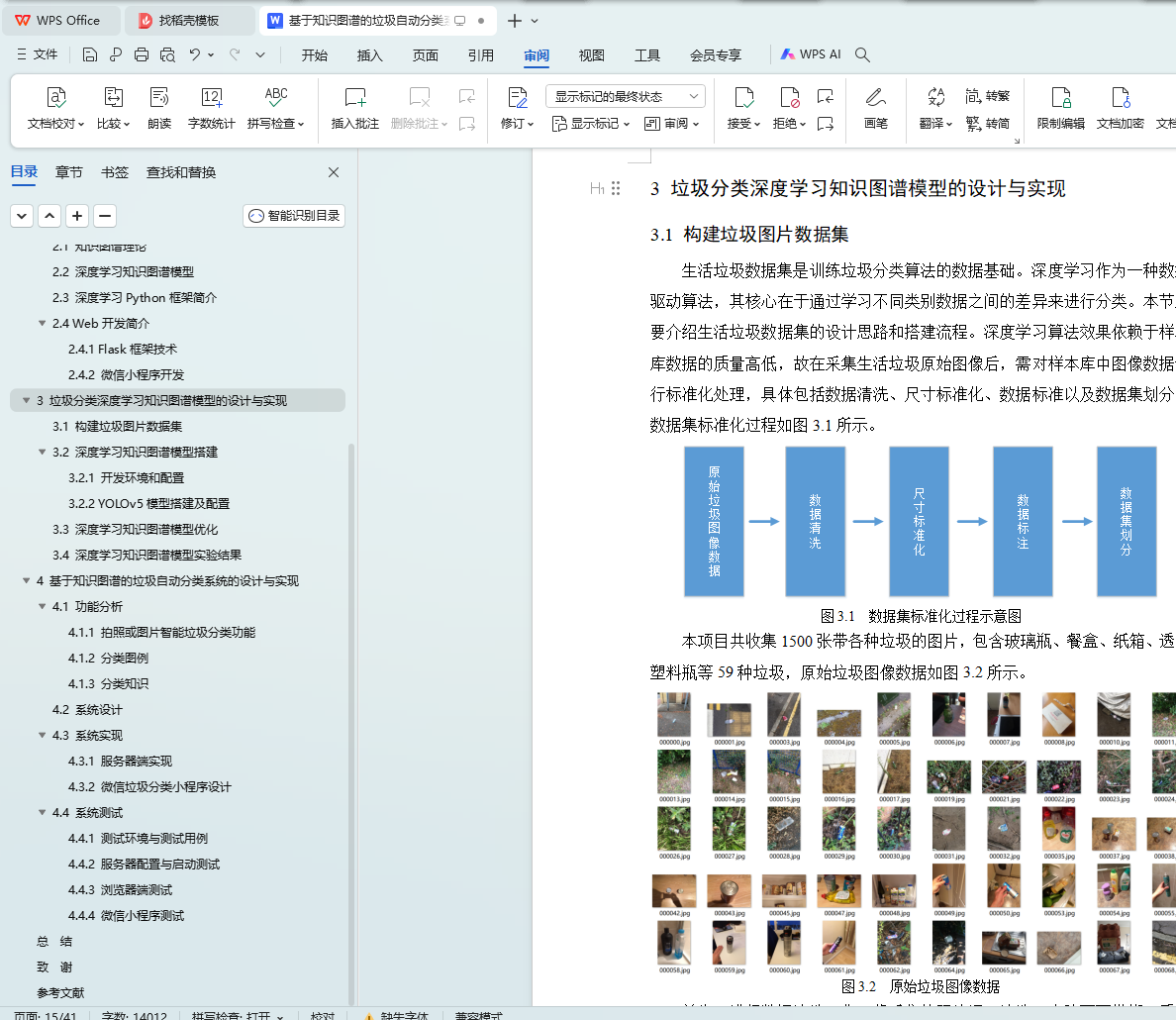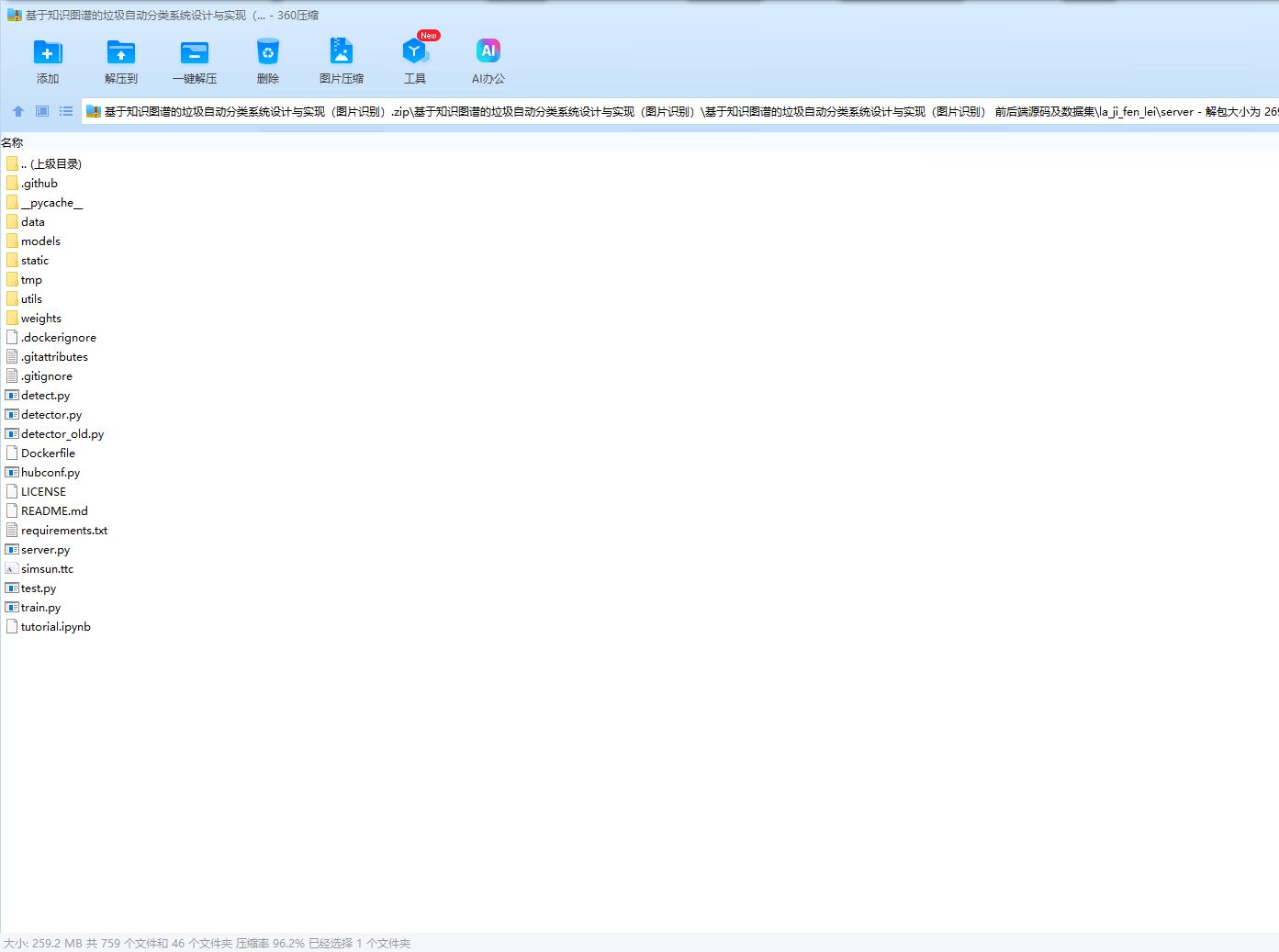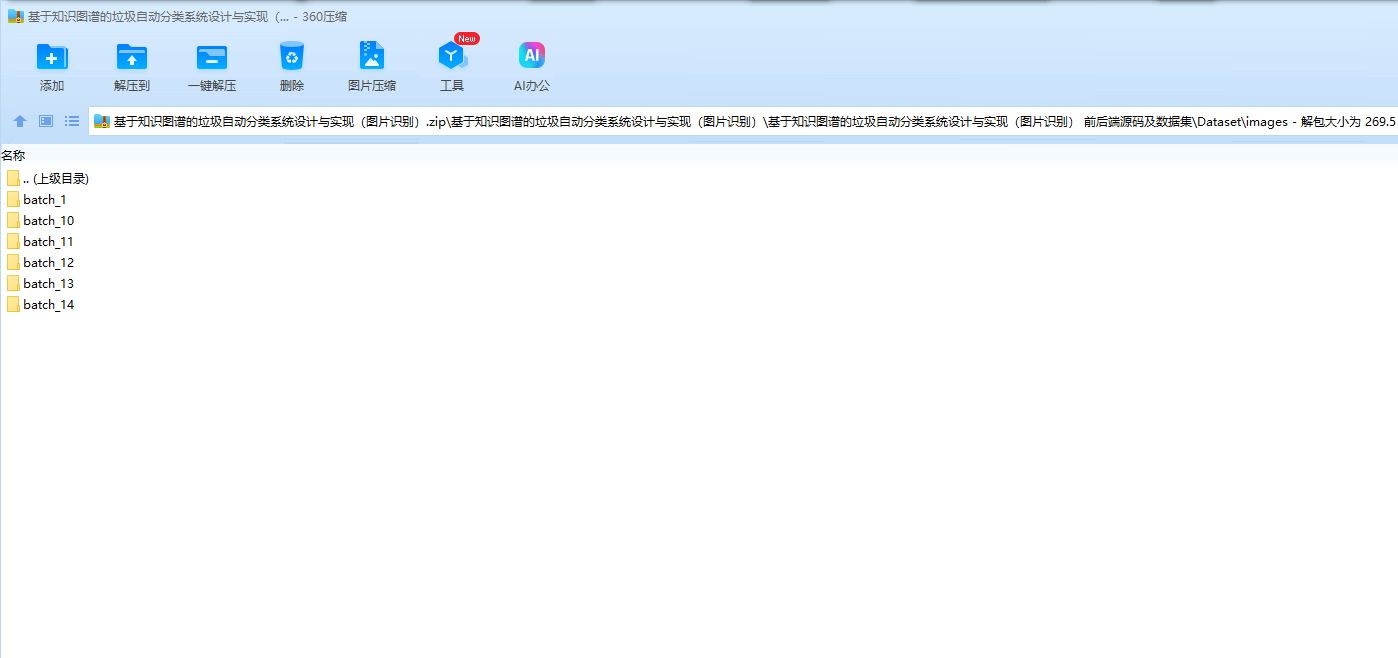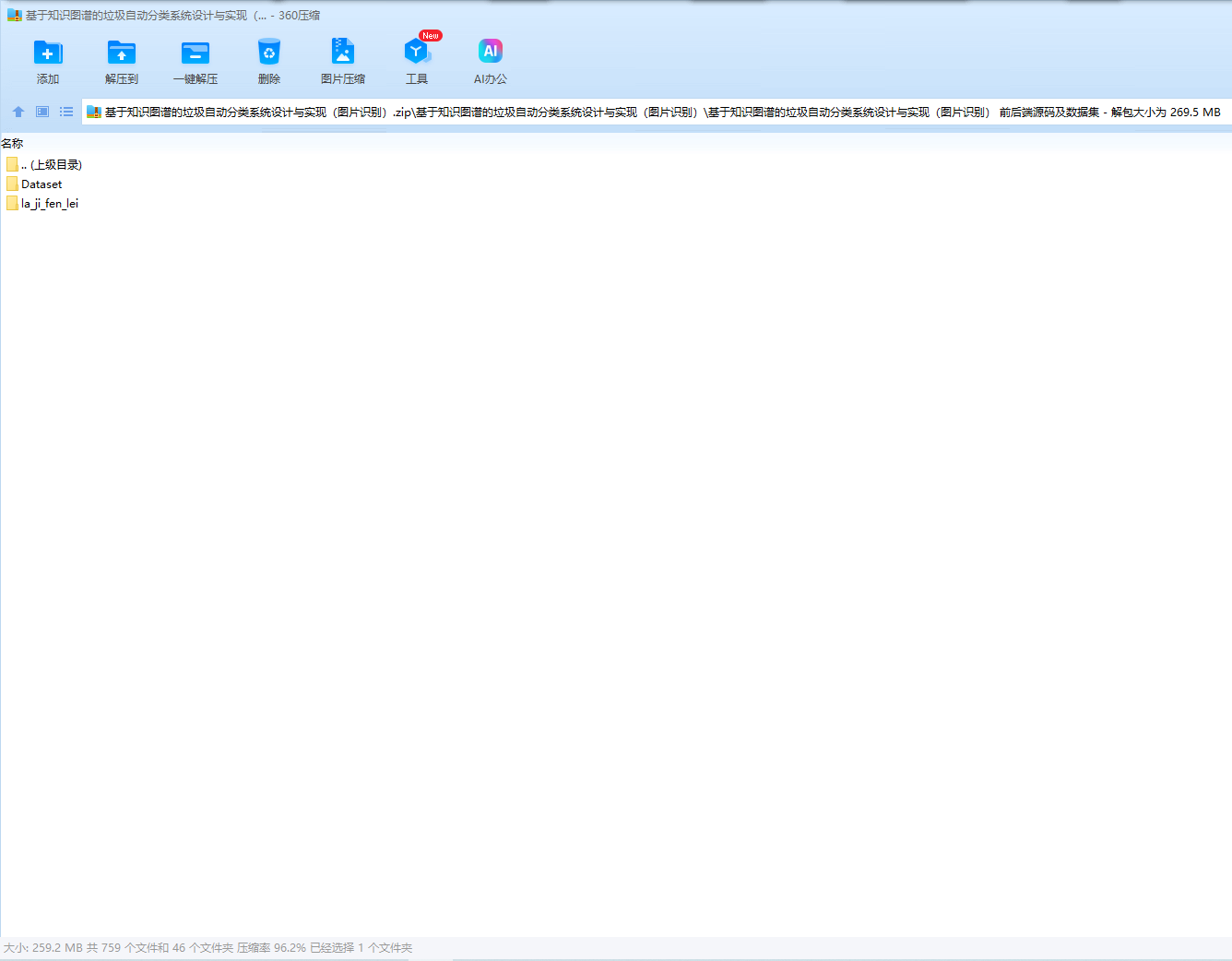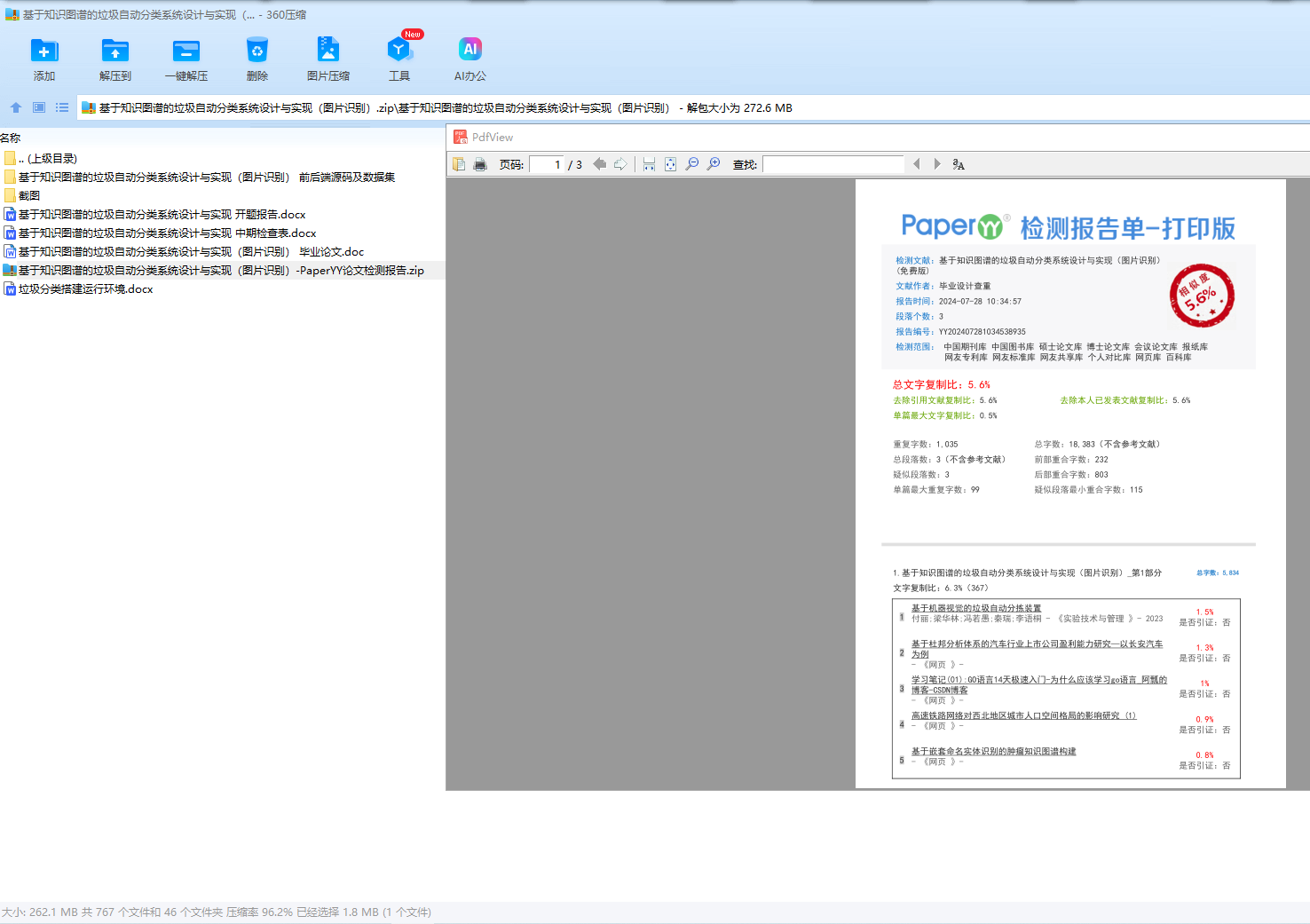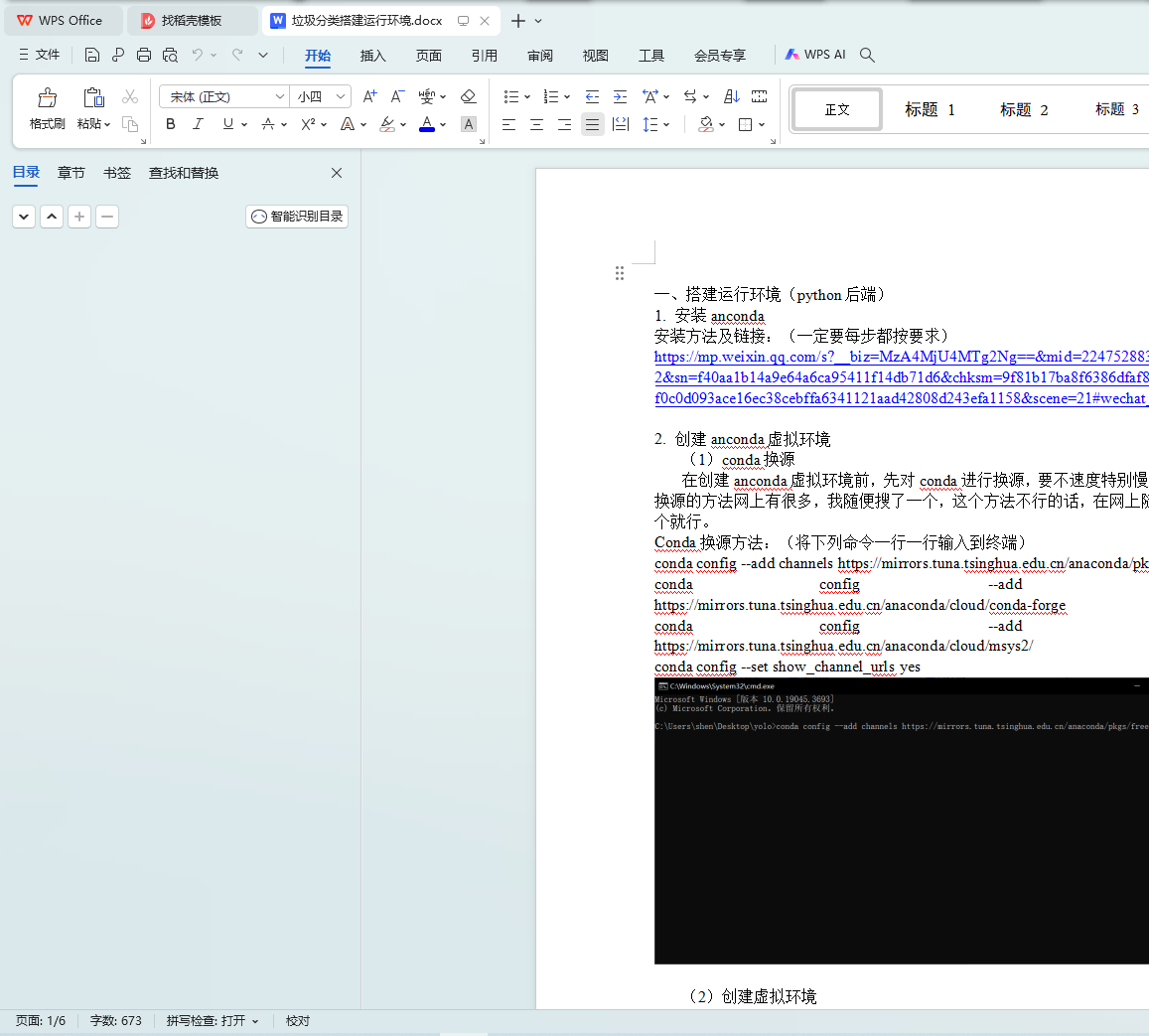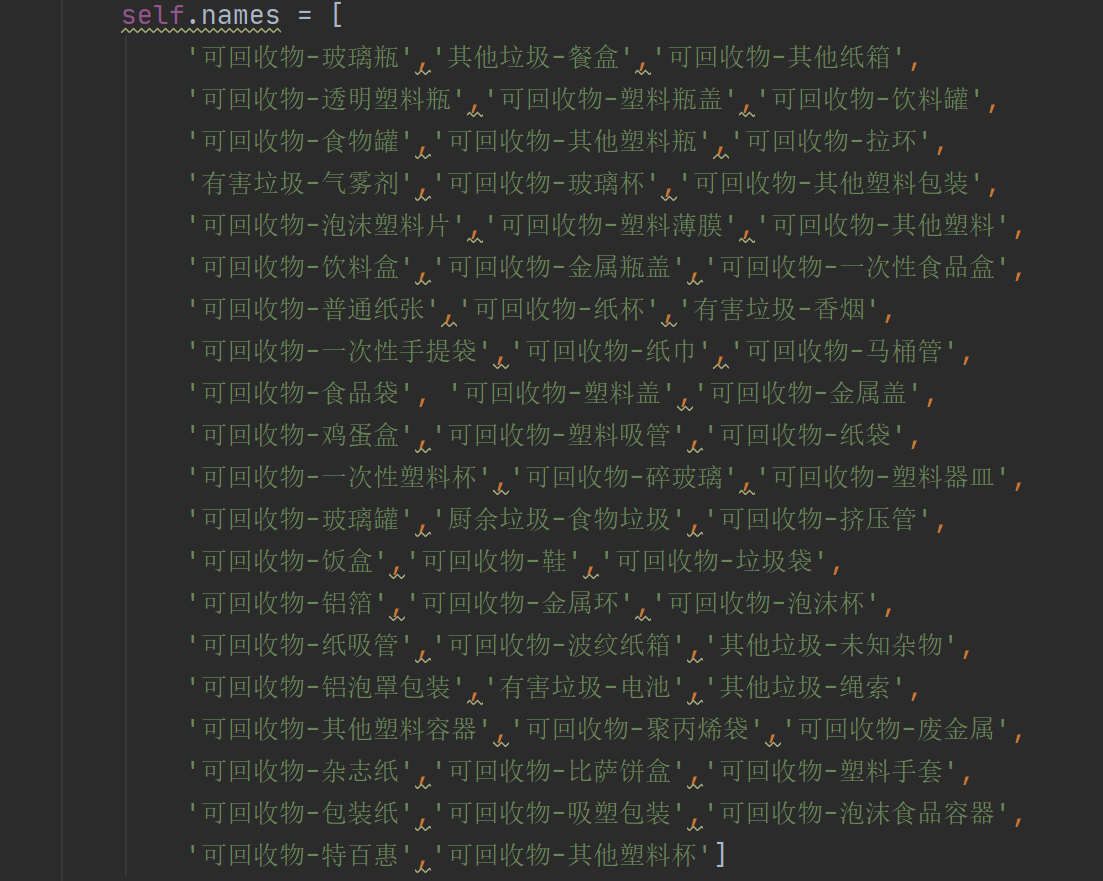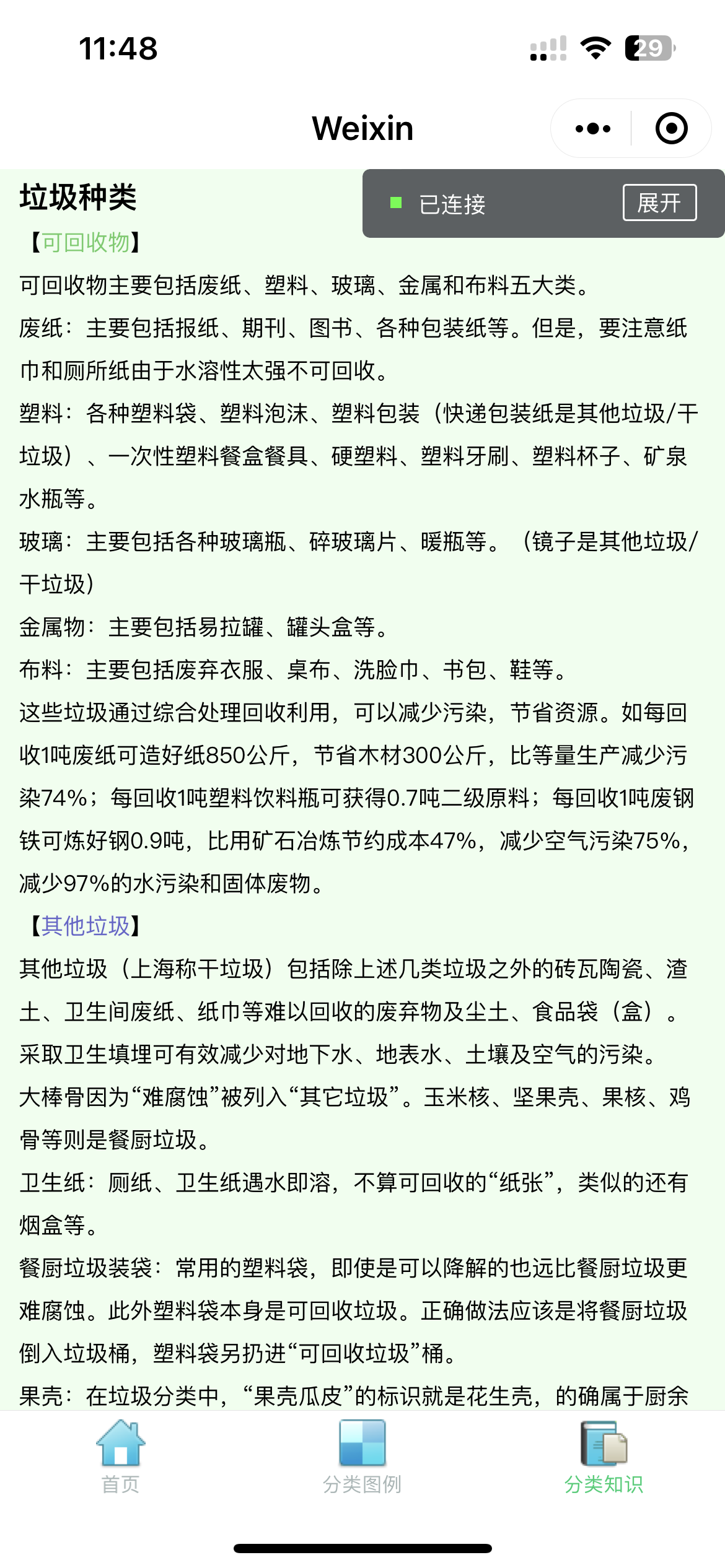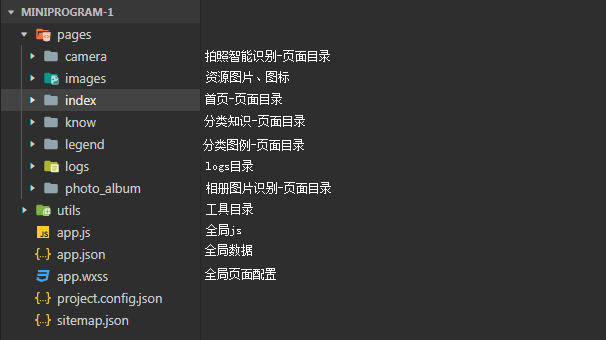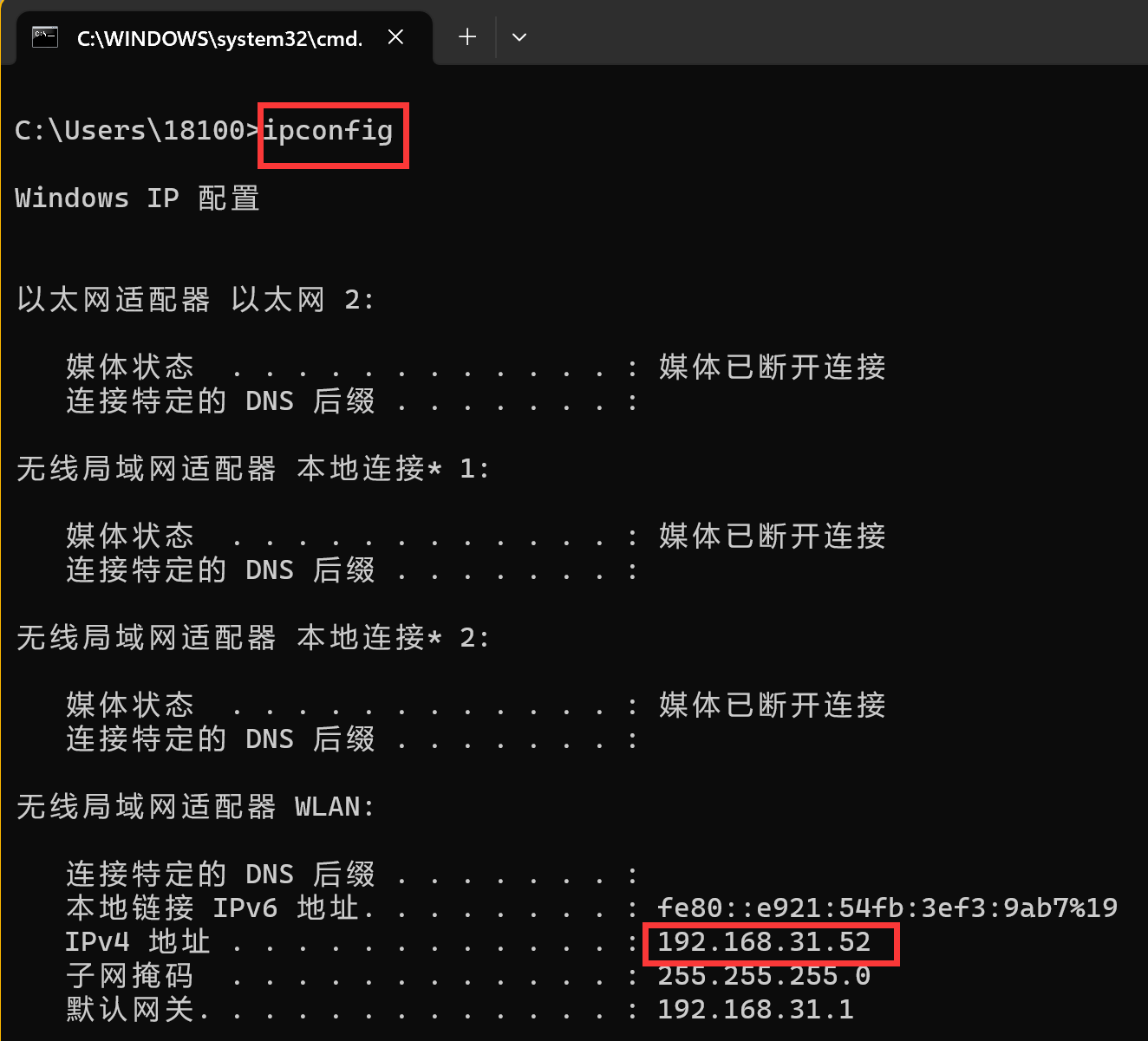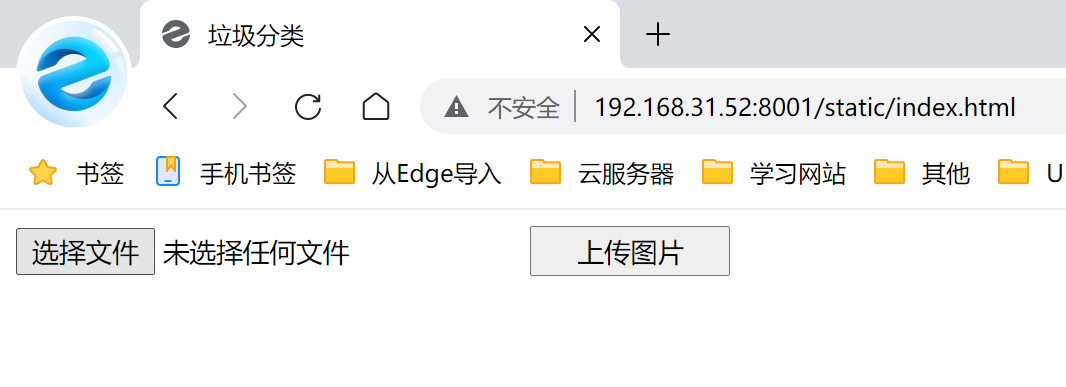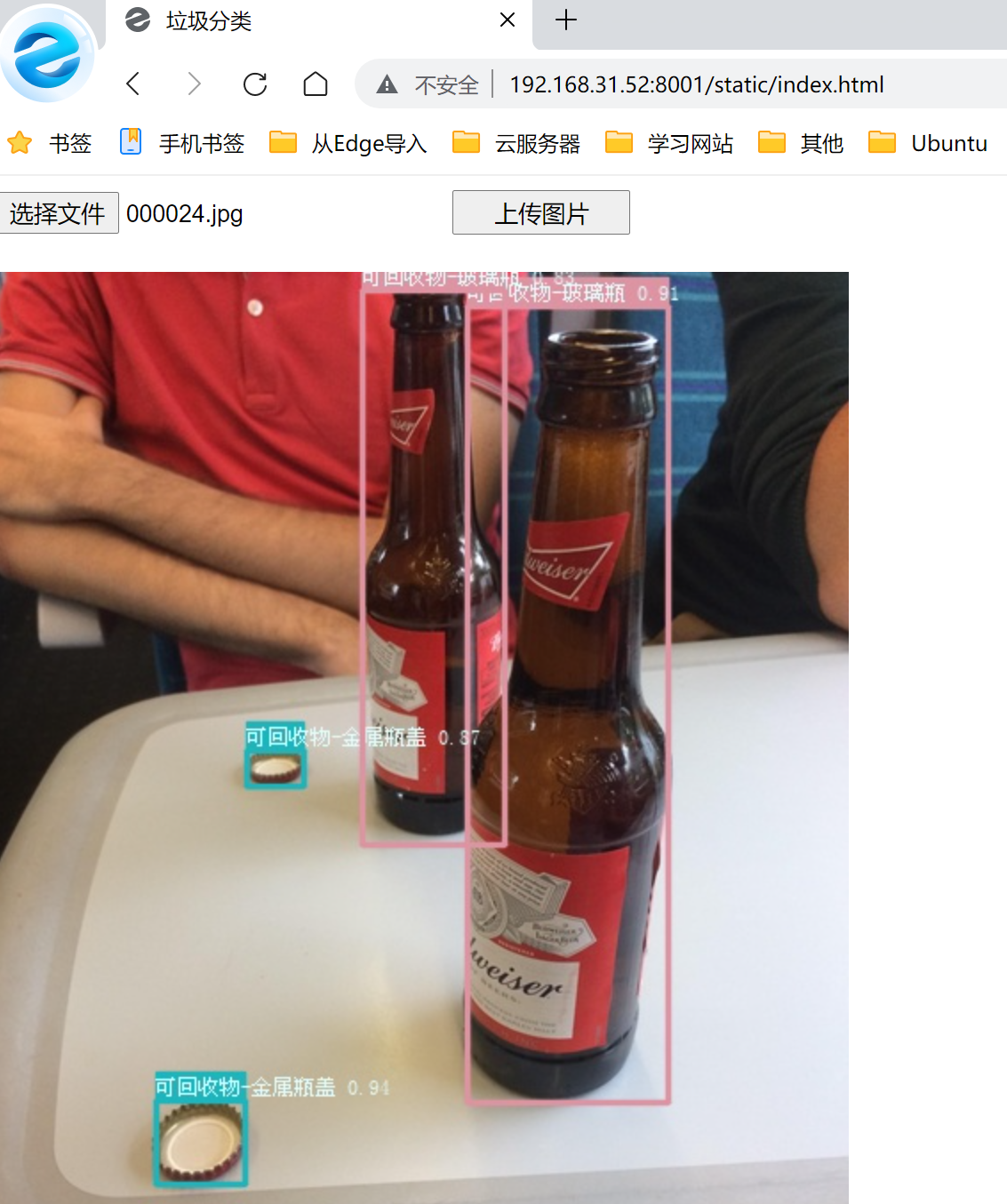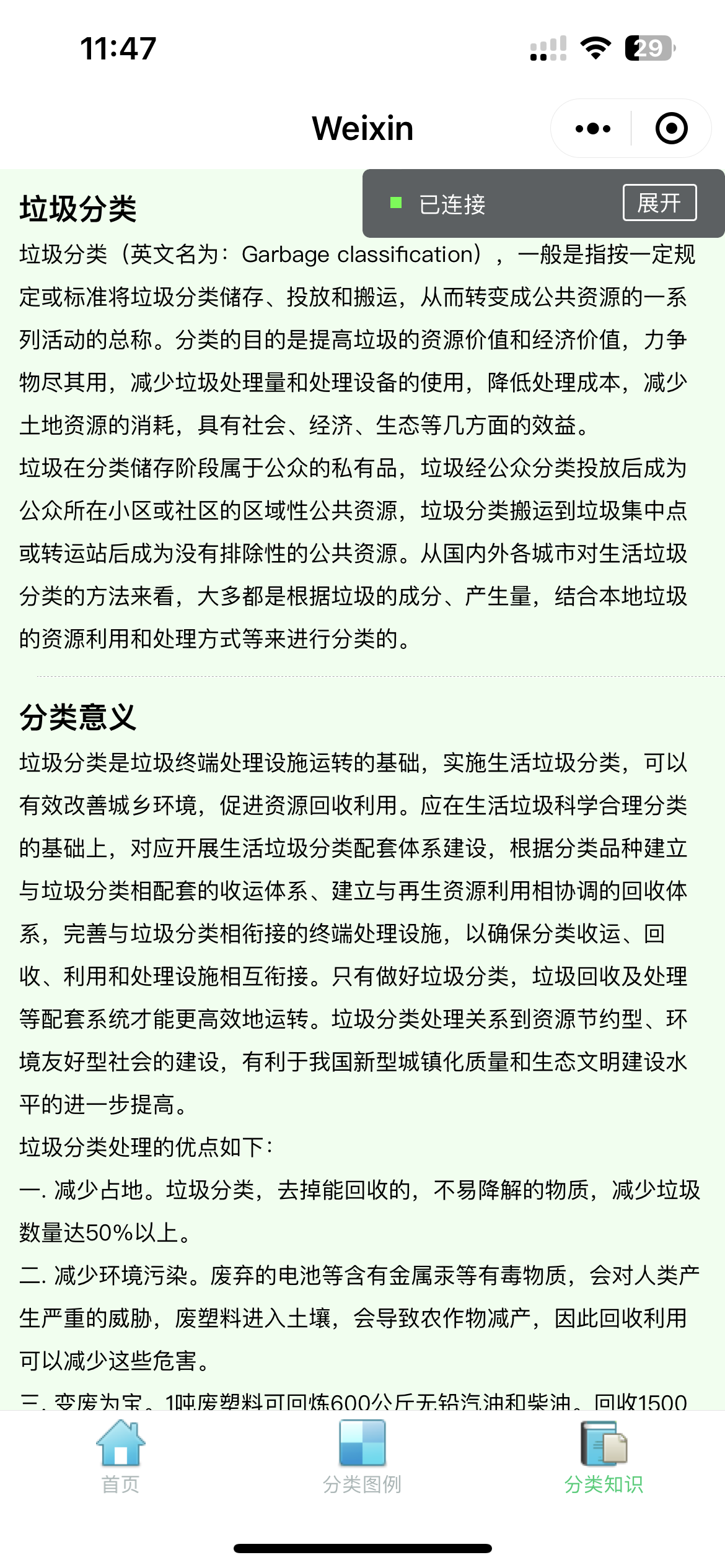摘 要
随着国内垃圾数量的快速增长,传统的人工垃圾分类方法已无法满足高效、准确的需求。本文提出了一种基于知识图谱的垃圾自动分类系统,该系统利用深度学习算法,特别是轻量级的YOLOv5s模型,对垃圾图像进行自动识别和分类。经过深入调研与比较,我们选择了YOLOv5s模型,因其在保持高准确率的同时,参数量较小,适用于移动端的实际应用。
基于该模型,我们研发了微信小程序端的垃圾分类应用系统,实现了通过手机拍照对生活垃圾进行快速、准确的分类识别。此外,系统还集成了相册照片识别、文字知识分享和垃圾知识图例展示等功能,为用户提供全方位的垃圾分类服务。测试结果显示,该系统的垃圾分类准确率达到了98.5%,具有较高的实用价值。本研究不仅为城市垃圾管理提供了有效的技术支持,也为深度学习在垃圾分类领域的应用提供了新的思路。
关键词:垃圾自动分类;知识图谱;深度学习;YOLOv5s模型;Python
ABSTRACT
With the rapid growth of domestic garbage quantity, the traditional manual garbage classification method has been unable to meet the demand of high efficiency and accuracy. In this paper, we propose an automatic garbage classification system based on the knowledge graph, which uses deep learning algorithms, especially the lightweight YOLOv5s model, to automatically identify and classify garbage images. After in-depth investigation and comparison, we chose the YOLOv5s model, which is small for reference while maintaining high accuracy, and is suitable for practical applications on mobile terminals.
Based on this model, we have developed the garbage classification application system of WeChat small program, which realizes the rapid and accurate classification and identification of household garbage through mobile phone photos. In addition, the system also integrates photo album and photo recognition, text knowledge sharing and garbage knowledge legend display and other functions, to provide users with a full range of garbage classification services. The test results show that the garbage classification accuracy of the system reaches 98.5%, which has high practical value. This study not only provides effective technical support for urban waste management, but also provides new ideas for the application of deep learning in the field of waste classification.
Key words: automatic garbage classification; knowledge graph; deep learning; YOLOv5s model; Python
目 录
摘 要
ABSTRACT
目 录
1 绪论
1.1 研究背景及意义
1.2 国内外研究现状
1.2.1 垃圾分类软件现状
1.2.2 垃圾图像分类研究现状
1.3 本文主要研究内容及章节安排
2 相关技术介绍
2.1 知识图谱理论
2.2 深度学习知识图谱模型
2.3 深度学习Python框架简介
2.4 Web开发简介
2.4.1 Flask框架技术
2.4.2 微信小程序开发
3 垃圾分类深度学习知识图谱模型的设计与实现
3.1 构建垃圾图片数据集
3.2 深度学习知识图谱模型搭建
3.2.1 开发环境和配置
3.2.2 YOLOv5模型搭建及配置
3.3 深度学习知识图谱模型优化
3.4 深度学习知识图谱模型实验结果
4 基于知识图谱的垃圾自动分类系统的设计与实现
4.1 功能分析
4.1.1 拍照或图片智能垃圾分类功能
4.1.2 分类图例
4.1.3 分类知识
4.2 系统设计
4.3 系统实现
4.3.1 服务器端实现
4.3.2 微信垃圾分类小程序设计
4.4 系统测试
4.4.1 测试环境与测试用例
4.4.2 服务器配置与启动测试
4.4.3 浏览器端测试
4.4.4 微信小程序测试
总 结
致 谢
参考文献
